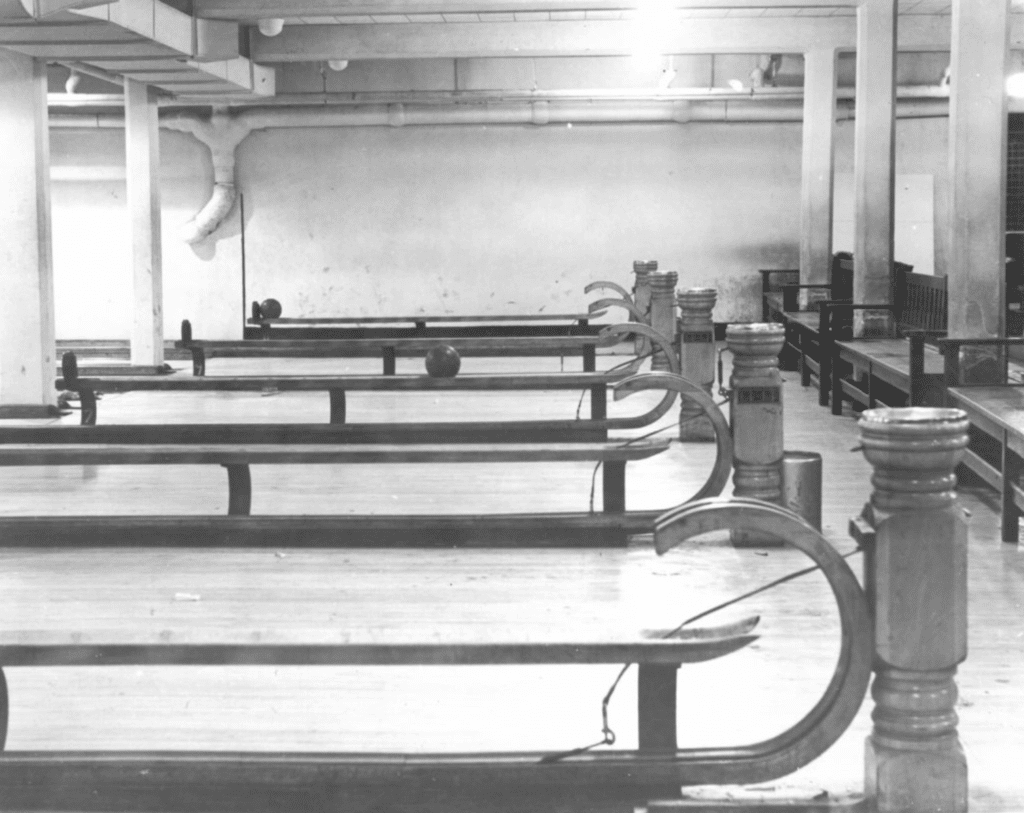One must be wondering, how on earth is an article on a ‘timber’ content dedicated website titled ‘Turkey Time’! My promise is it doesn’t have anything to do with aviary, nor Thanksgiving! I digress.
Today’s article focuses on the ‘turkey’ ladled pass time of Ten Pin Bowling. The history of timber and its incorporation in Ten Pin Bowling will be explored throughout.
History of Ten-Pin Bowling
Whether it be a popular pastime or a competitive streak, Ten Pin Bowling is a popular sport worldwide; with over two million players in Australia alone. Ten Pin Bowling’s origins date back to ancient Egyptian times, incorporating similar styled events played as part of religious rituals.
By the late 19th Century, bowling had made its way north to Europe and across the Atlantic to North America. The two aspects of Ten Pin Bowling that have been or continue to be reliant upon timber as a source include both the lanes and pins.

Evolution of Bowling Lanes
The earliest bowling lanes were originally made of sawdust, sand or clay; providing grip yet no surface consistency.
A challenge for regular and competitive bowlers. Continuous development of modern bowling lanes introduced firmer surfaces, constructed of steel and concrete, during the early 20th century.
Unfortunately, they were deemed too slippery and lacked grip. To counter this, wooden bowling lanes were introduced during the 1920’s.

The perfect balance of grip, durability and flexibility; creating ideal conditions for competitive bowlers.
Wooden planks were utilised as alley surfaces, but flaws in their floors (or is that floors in their flaws?) were starting to rear their ugly head.
Splintering and warping were two prominent issues that arose during these initial stages. Constant problems plagued wooden alleyways, lowering their popularity over the coming years.
Moving into the 1940’s and 1950’s technological advances led to the creation of laminated wood construction techniques.
These became standard for bowling alleys. Advantages included smoother surfaces, fewer ruts and bumps and prolonged durability.
Polyurethane was layered over the top during the 1960s, providing an added extra layer of protection that was further resistant to dents, scratches and natural wear and tear.
The introduction of hard rock maple during the 1970’s was revolutionary to the sport, as it further improved the quality of bowling alleys worldwide.
Hard rock maple is a hard, dense timber that capably absorbed the intense pressure of bowling balls down an alleyway.
Its tight pores also prevented the ongoing build-up of grime, dirt and oil over time, reducing maintenance costs and needs.
Modern-day alleyways are now made up of a combination of types of woods, with the topmost layer still predominantly utilising hard rock maple.
Construction of Bowling Pins
Further to its importance in recent wooden lanes, Rock Maple is the main staple of pins utilised in alleys.
The process begins by glueing two pieces of timber on top of one another. The uppermost is narrower.
Once secured, they are placed on a lathe and the magic begins.
After their curved shape is complete, the beautiful maple surface is coated and painted; providing them with their distinctive white, two-red stripes, glossy finish.
Synthetic versions are frequently utilised throughout alleys worldwide. However, the distinctive sound of a ball on a wooden pin is far more satisfying than that of a hollow plastic sound.
On the surface, [a tightly held, shock resistant and smooth one at that], the importance of timber in Ten Pin Bowling is easily overlooked.
But the next time one manages 3 strikes in a row, even a solitary one for that, remember that without the well-maintained surface, one wouldn’t capably knock down 10 pins, not least 30. Hence…Turkey Time!






